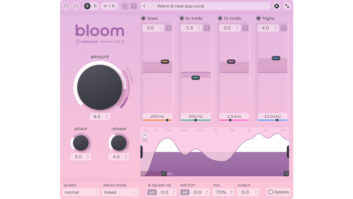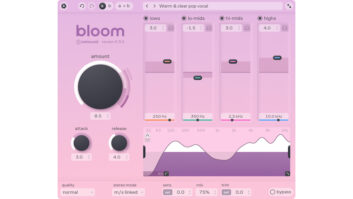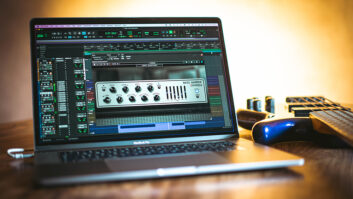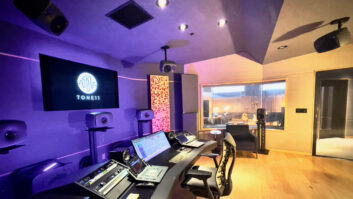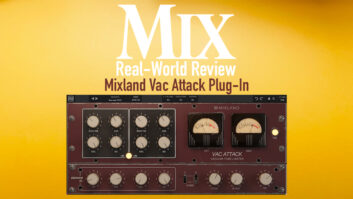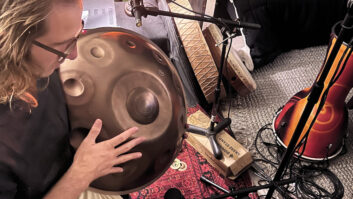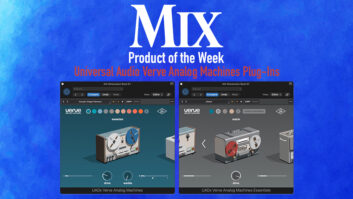Rich Tozzoli journeys through his Continuing Adventures In Audio with an axe on his back.
Although it’s a software column here, much of what we do is recording, and one of the hardest guitars to capture properly is a Telecaster. Teles can be incredibly bright and thin if not approached in the right way, but when recorded properly, there are few sweeter instruments. Recently, I was tracking my Tele through a Colby Dual Tone Booster DTB 50 at Clubhouse Studios in Rhinebeck, NY. The amp happened to be designed by Mitch Colby and the great Tele master Jim Wieder. So later that day, Wieder, who’s played with everyone from the Band and Dylan to Taj Mahal and Keith Richards, was able to stop in, talk about recording the Telecaster, and wax poetic about some of his current gear and projects.
WHERE DO YOU START WHEN RECORDING A TELE?
Begin with a good, clean sound. I always start there, setting the amp right so that it’s balanced with all pickup settings. Make sure the clean sound is rich, open and chimey on top. Maybe taking some of the presence down on the amp so it sounds right yet has body with each note. You have to get those pickups sounding good.
HOW DO YOU AVOID THE BRIGHT ‘ICE PICK’ TELE SOUND?
Well, that’s why they make a tone control. I use the tone control on the Tele all the time—so if you turn your tone down a little bit when you hit that back pickup, you can avoid it being really thin. Also, set your pickups to the right height. Don’t be afraid to put them up really close to strings in the back. That’s what I do with the lead pickup.
YOU DO? WHY?
I just like to get a lot of attack out of it. Some guys like it lower, and you get more air, so it depends. If you’re playing more country, some of the country guys turn the pickups down more. I don’t have the problem I do with a Strat with Teles, where you have to keep the pick-ps too low, because they have that magnetism pull on the bass strings. I don’t notice that. With the Big T pickups, it works great.
TELL ME ABOUT THE BIG T PICKUPS IN YOUR TELE.
Big T pickups are something I designed over a period of time with Lindy Fralin. They’re like my original 1952 Tele pickup, but the rhythm pickup goes to 11. It’s louder, still clear on top and very open sounding. And the back pickup is loud, yet it still gets that sticky ’52 tone with the right amount of mids without it being cloudy. They really sound great in a Tele and you can get them through analogman.com.
TELL ME ABOUT YOUR PRIMARY TELE AND AMP SETUP.
It’s a ’52 Telecaster, original back pickup with Big T rhythm pickup in it. Currently playing through a Colby DTB 50 amp. Over two years, Mitch and I designed together and were in production working on it. We took the best amps we could find and got the best Fender-ish clean sound and the best overdriven Dumble-ish type lead sound. There are two channels, so you can switch from rhythm to lead. It has two separate EQs, though, which most Dumble amps didn’t have…or any that I know of. I wanted to be able to switch, have all my lead sounds in my amp and amazingly rich rhythm sounds. It took years of listening, tweaking and hard work.
TALK TO ME ABOUT MIKING YOUR CAB WHEN TRACKING A TELE.
I usually always go back to the good old [Shure] SM57. If you can, stick that on the side of the speaker— not directly on the cone. I also use a Royer ribbon mic, set back a little bit. The Royer, or any good ribbon, really helps deliver a nice, rich tone. The hardest part of recording to me —what takes the most time—is getting the right tone. I spend all my time getting the right sound for the song. Once I decide, “That sounds right,” then the playing part usually comes, hopefully, pretty quick, because you got the right sound. You’re inspired to play.

